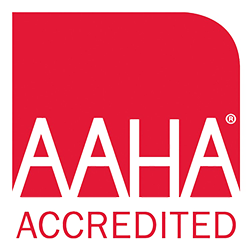Library
-
Diphenhydramine is given by mouth or as an injection and is used on and off label to treat allergic reactions, motion sickness, and to induce sedation. Side effects include sleepiness, and less commonly dry mouth and gastrointestinal upset.
-
Diphenhydramine topical (brand name Benasoothe®) is an antihistamine with some local anesthetic properties. It is used to relieve itching and skin irritation in dogs, cats, and other animals. Diphenhydramine topical comes in a variety of forms, which may be specially compounded.
-
Diphenoxylate + atropine (brand name Lomotil) is an opioid combination medication used to treat diarrhea or coughing in dogs and diarrhea in cats. Its use in cats is not generally recommended. Diphenoxylate + atropine is given by mouth in the form of a tablet or liquid. This article discusses administration, potential side effects, risks, and monitoring.
-
Docusate (Docusate Sodium Bloat Preparation, DSS, Dioctynate®, Pet-Enema®, Enema SA®, Docu-Soft®, Anti Gaz, Bloat Eze, Bloat Go, Bloat Release, Bloat Treatment, Bloat-Lax) is a laxative medication used to soften dry or hard stools and assist with constipation and bloating in animals. It is prescribed for use in dogs, cats, horses, cattle, goats, sheep, and rabbits, but is not recommended for reptiles due to potential fatalities.
-
Dorzolamide is applied to the eye and is used off label to treat glaucoma (increased eye pressures). Give as directed by your veterinarian. Common side effects include stinging sensation, eye redness, watery eyes, and light sensitivity. Do not use in pets that are allergic to it or sulfonamides. If a negative reaction occurs, please call your veterinary office.
-
Doxepin is given by mouth and is used off label to treat psychogenic dermatoses such as excessive grooming and psychogenic alopecia. Give as directed. The most common side effect is sleepiness. Do not use in pets that are allergic to it or other tricyclic antidepressants, in pets currently using an MAOI or flea/tick collar, or in pets undergoing skin allergy testing within two weeks. If a negative reaction occurs, please call your veterinary office.
-
Doxycycline is an antibiotic given by mouth in the form of a tablet, capsule, or liquid, used off label to treat certain infections. Common side effects include stomach upset, sun sensitivity, and increases in liver enzymes. Serious side effects include liver failure, seizures, and trouble swallowing. Do not use in pregnant pets and use cautiously in pets with liver disease or in young pets. If a negative reaction occurs, please call your veterinary office.
-
Ear cleansing/drying products are used over-the-counter to treat and prevent ear infections in many species of pets. They come as a liquid solution that is used topically within the ear canal and are typically used in the ears after debris and wax have been removed using a cerumenolytic cleanser.
-
Echinacea is given by mouth and is used over the counter and off label to improve immune system function and reduce inflammation. Give as directed by your veterinarian. Side effects are uncommon but may include vomiting and diarrhea. Do not use in pets that are allergic to it. If a negative reaction occurs, please call your veterinary office.
-
Emodepside/praziquantel (brand name Profender®), is an antiparasitic drug used to treat and control hookworms, roundworms, and tapeworms in cats. Empodepside with praziquantel comes in topical solution form that is applied directly to the skin.


